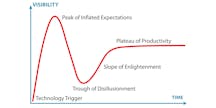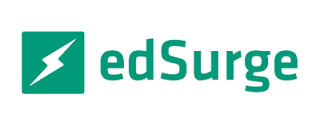I’d now like to take a second look at how Hype Cycle theory predicted the end of the “Coding Bootcamp 1.0” era and how a new theory, “Crossing the Chasm,” shows us what lies ahead.

Hitting the Plateau
The Hype Cycle predicts that after a rocky period of disillusionment, an industry and its customer base reach a new equilibrium of expectations where both sides better understand what a product can, and importantly, cannot do. After a peak that touted coding bootcamps as the savior of the American economy, expectations have come into better focus: coding bootcamps can deliver improved outcomes for students, but they must grapple with two realities.
First, coding bootcamps are not a one-size-fits-all solution to education, and their intense learning environments can be challenging for students used to a more traditionally paced curriculum. Second, placement outcomes remains the dominant priority of students during school selection. We have seen from the shutdowns of Dev Bootcamp and Iron Yard that coding bootcamps growing around values like community or open access have struggled to achieve financial sustainability.
The Gartner Hype Cycle (PDF) predicts that before an innovation hits the Plateau of Productivity, “supplier consolidation and failure occurs because there is too little adoption growth to sustain so many similar products.” That’s what we saw towards the end of 2017, as many of the first-wave bootcamps that started between 2011 and 2013 have been acquired or are in the process. There are smaller high-quality contenders in many markets, but it’s unlikely they will see the hypergrowth (and funding opportunities) that attended early entrants.
However, this is where the value of Hype Cycle theory drops off. It predicts the leveling expectations of the market, but not what that market will look like as it changes. For that, we need to cross the chasm.
Crossing the Chasm
Crossing the Chasm has two main parts. First, it separates customers into different segments of the technology adoption cycle. Second, it introduces a large chasm between two of those critical segments—the early adopters and the early majority. Many products beloved by early adopters (think Google Glasses or the Segway) never cross the chasm to penetrate the mainstream market.
The coding bootcamp industry now finds itself at the edge of this precipice, and it shows signs of making the leap. However, to actually cross the chasm, coding bootcamps will have to successfully navigate three challenges:
- A changing customer set with new expectations
- The need to forge a “Whole Product”
- Potential new delivery models

The Changing Customer
The innovators and early adopters of any technology are often risk-tolerant and entrepreneurial in spirit. They’re eager to take big risks on companies or ecosystems, if they’re excited about the core promise of the product. (Our first student, for example, came to drop off his tuition check and saw only a single delivery of IKEA boxes, and no other signs of a campus.)
Students in the early majority, however, are far more careful about the risks they take. They prefer an established brand, care about the quality of the product, and want assurance that there’s a history of transparency and successful outcomes.
I predict that regulatory standards established by groups like the Council on Integrity in Results Reporting (CIRR) and Entangled Solutions will become paramount in 2018 (Disclosure: I sit on the board of CIRR). The coding bootcamp industry formed CIRR in 2016 to help students understand the risks inherent in attending these programs, and we have seen growing excitement from both students and bootcamps themselves around adherence to this standard.
As coding bootcamps are able to provide proof points for students, a new segment of customers will enter the market. More and more, we’re seeing businesses, universities, cities and countries partner with coding bootcamp providers in order to provide bootcamp programming at scale to their own stakeholders. Advocates from inside these organizations are Innovators in their own right. But moreover, they are able to use standardized industry results to meet the needs of their organization or demographic.
The Whole Product Model
Crossing the Chasm also introduces the “Whole Product Concept,” which describes the gap between what a company delivers and what actually impels customers to make a buying decision. Here, I think there are several product add-ons that will become more prevalent as bootcamps find their way to becoming a “Whole Product.”
1. Stackability of Credentials: Where do the credits or certificates from a coding bootcamp fit into an associate’s or bachelor’s degree? Rather than choose one model over another, students will increasingly look for bootcamps that can integrate with the traditional higher education system to give them an education customized specifically to their needs.
2. Certification: As the value of bootcamp certificates rises, we’re seeing more false reporting from “graduates” — primarily in the form of LinkedIn profiles from people who have no affiliation with our school, yet claim to. Students and employers will seek out better employment verification methods like blockchain or digital certificates that cost less to operate than traditional registrar offices.
3. Financing: While there are a few private financing options available for bootcamp students, affordability continues to be limiting factor. Income Share Agreements and deferred tuition models hold a lot of promise, but growth is currently limited for regulatory and financial reasons.
4. Alum Networks and Lifelong Learning: Graduates of the first coding bootcamps have now been working as software engineers for more than six years. There are over 20,000 of them across the United States (and possibly an order of magnitude more across the globe). These graduates form strong alumni networks that have become a compelling selling point for new students.
5. Housing, Student Counseling and Student Services: Students want an all-in-one solution. Few bootcamps currently offer these services, but students will increasingly see these amenities as part of the coding bootcamp “Whole Product.”
New Delivery Models
Finally, Chasm theory predicts that as companies seek to deliver the “Whole Product” to this new market, they will inevitably need new delivery models to make it happen. We should thus expect to see coding bootcamps pursue three objectives in 2018:
1. Diversified Portfolio of Competency: Add-on services that bootcamps currently provide around training, job placement and product development will transform into full-fledged product divisions at the major bootcamps. The increasing needs of partnered companies and the alumni base means that current services such as skills certifications, career placement, engineering consultancy, research and product development can become viable as separate product lines.
2. University Partnerships: Universities solve many of the “Whole Product” issues we’ve discussed. For universities, integrating with bootcamps can be a compelling value-add, especially if students are able to put bootcamp credits toward their larger degree pursuit. Universities and their partners are exploring various methods in which this may work and we should see continued innovation on this front.
3. Direct Government Sponsorship: Fullstack Academy is currently engaged in a successful partnership with New York City, which provides full scholarships for 80 low-income New Yorkers to attend our coding bootcamp. This is the fifth time the city has run this partnership, and it continues to see excellent results. As global competition increases for software engineering talent, I expect this to be a major scaling vector for coding bootcamps. (Amazon’s search for the second headquarters shows how important local talent is to attracting corporations.)
This promises to be another exciting period for coding bootcamps as we move from the Bootcamp 1.0 era to Bootcamp 2.0. Many of the challenges from the first era have been solved or at least better understood—including outcomes transparency, education regulations, pedagogical methods, curriculum development, instructor training.
Employers and their recruiting teams have already crossed their own chasm. Previously unsure how to evaluate bootcamp grads as potential hires, many have firmly solidified bootcamps as a part of their hiring mix and are excited to have found a talent pool that’s day-one ready, experienced in the workforce, and well-versed in the industry.
This new era will be defined by new delivery models that offer students the “Whole Product” they’re seeking, and to fulfill this promise, we should expect to see many non-traditional partnerships in the year ahead. For prospective students, coding bootcamps currently offer amazing educational return on the time and money required, and students should come to expect—as they deserve to—an increasing range of options, more stability, and transparent, reliable outcomes.

